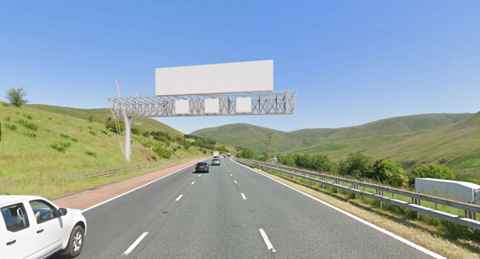London practice beats runner up John McAslan in RIBA competition for road operator National Highways

London-based practice Useful Studio has pipped John McAslan & Partners to win a RIBA competition to design the next generation of England’s motorway gantries for National Highways.
The firm’s proposals for a series of simplified structures built with weathered steel were selected from 32 entries submitted by architectural firms across the UK and Europe.
It was chosen by the judging panel for its “elegance and simplicity, and how cohesive the design concept was across a range of different structures”.
National Highways executive director for operations Duncan Smith praised the concept for using less steel than existing gantries, lowering their potential carbon impact, and the opportunities it presented in terms of a “resource efficient, standardised, coherent suite of gantry structures that would be potentially sympathetic to a broad range of settings and contexts”.
Useful Studio will now work with National Highways to develop their design concept, with a view to it becoming the standard design for new roads and major upgrades from around two years’ time.
The government’s road operator currently has around 3,500 gantries, although it said it will not be immediately replacing them.
McAslan came in second place with a design consisting of a sculptural primary mast and cable-stayed lightweight modular gantry truss.
Judges said they admired the “clarity and dynamism” of the concept and its potential to be developed into an elegant family of structures.

Commended entries included Knight Architects’ plan for removing gantries altogether in favour of displays inside vehicles, and Kevin Kelly Architects and Stand Engineers’ proposals for gantries constructed from timber.
RIBA architect advisor Jonathan McDowell said:“It is very encouraging that National Highways is actively engaging the design community in helping to improve the design of these ubiquitous but cumbersome parts of the motorway experience – we enjoyed seeing a wide range of interesting ideas, including those which challenged National Highways’ current practices.
“The simple and elegant approach of the winning proposal has the potential to greatly improve the appearance and resource-use of these structures, and we look forward to seeing how it is developed and implemented.”
> Also read: Architects sought to design new generation of motorway gantries
The competition is part of a National Highways design initiative which sets out 10 principles for good road design including that gantries should demonstrate sensitivity to the landscape, heritage and local community, eliminate unnecessary and confusing clutter and be environmentally sustainable.
















1 Readers' comment